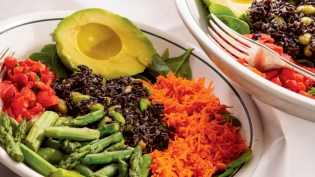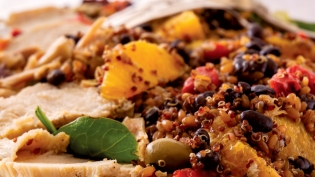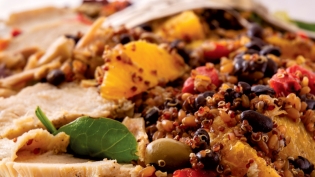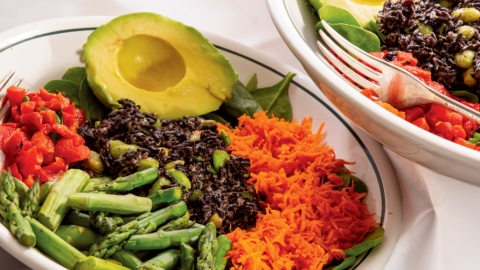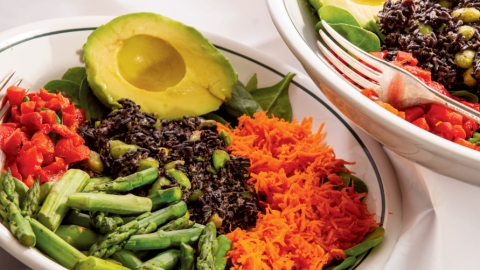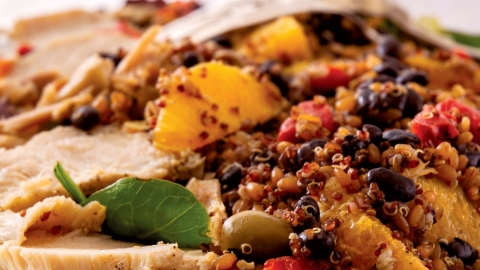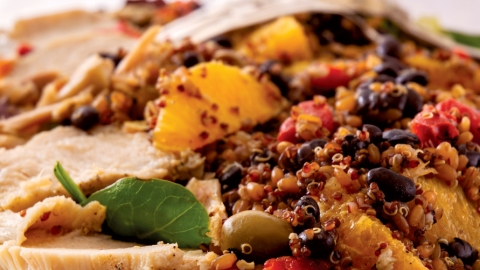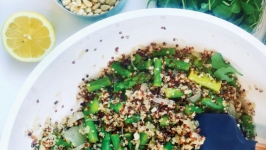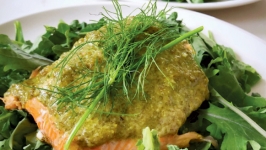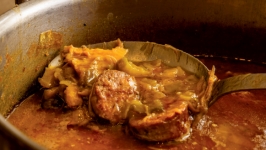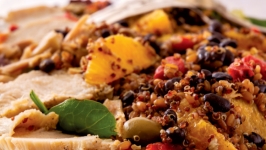Cooking Fresh: Goodness by the Bowlful
The grain bowl is a simple formula: a few raw greens, some tasty veggies (raw or cooked), seasoned whole grain (brown rice, barley, farro), some beans and, when possible, something rich and delicious, like avocado. Top with protein if you’re inclined: soft- or hard-cooked egg, chicken, tofu.
My favorite grain bowls are the ones at Vinaigrette Salad Kitchen, fast-casual restaurants in Lexington and Louisville, where the healthy whole grains are always chewy and well seasoned, there are lots of healthy ingredients, there are delicious surprises like green olives or tahini and, best of all, they fill me up until dinner.
It’s the whole grain that puts the extra heft in what otherwise might just be salad. But they aren’t just filler. The health benefits of whole grains are as boringly consistent as they are impressive: protein, fiber, healthy fats, minerals, vitamins, phytonutrients, all working together to do everything from improving eyesight and blood sugar to reducing obesity and cancer risk.
Though one whole grain might be higher in protein and another higher in potassium, in the end they all have health-giving attributes. Choose what you like to eat; mix and match to make what you prepare more appetizing. Don’t get hung up on amounts. Create something healthy and beautiful from what your fridge has to offer. And remember, cooked whole grains and beans freeze well.
You can find nutrient profiles and characteristics of many whole grains here: https://wholegrainscouncil.org/sites/default/files/atoms/files/WGC-A-Z_Guide-CookingWholeGrains.pdf. Any whole grain will work in a grain bowl, so choose what you like. Here are my favorites:
BLACK RICE: Black rice is a whole grain with a nutrition profile much like brown rice, with one exception: It’s rich in anthocyanins, health-giving superheroes credited with everything from reducing heart disease to reducing inflammation. I like it because it’s chewy and beautiful in a bowl.
WHOLE WHEAT BERRIES: Among its advantages, whole wheat is considered a great “prebiotic,” working in the gut to increase the good bacteria to keep us healthy. Whole wheat berries are chewy, delicious and cheaper than other varieties of supermarket Triticum (wheat and its relatives), including farro, einkorn and spelt, all of which are delicious but can be hard to find.
QUINOA: South American native quinoa came to the attention of North Americans at the end of the last century. Many recipes suggest you “rinse,” quinoa before you cook it, which in the early days of quinoa was required to wash off its naturally (and bitter) protective outer coating. These days, quinoa is usually sold prerinsed. Quinoa comes in a variety of colors that are interchangeable but do look different on the plate.
My favorite way to prepare whole grains for grain bowls is to cook two or three grains separately, then mix the cooled grains with a bean of choice and salad dressing. Sometimes I’ll mix in grated carrots or finely chopped red pepper. I then refrigerate the mixture to be ready when it’s required for packing lunch or making dinner.
When cooking whole grains, follow the directions on the package (or internet, if you buy in bulk) but be ready to taste and adjust. If your wheat berries are al dente enough but haven’t absorbed all their cooking water, drain off the excess. Similarly, if your black rice needs additional cooking, add water as necessary.
Once you have your basic grain mixture prepared, you can build your bowls with seasonal and local ingredients. Start in spring with baby greens, add your grain mixture, then add radishes, scallions, peas and asparagus. As the season progresses, chopped lettuces serve as your green, then add grilled squash or blanched green beans, soon to be followed by chopped red peppers, cherry tomatoes or tomatoes, and so on. Add protein as you like.
Similarly, your grain bowls can be served hot, with cooked, chopped greens as the bottom, hot grains and beans, roasted or grilled vegetables and grilled proteins.
The recipes below should serve as guidelines only, with estimated amounts and suggested toppings— improvise freely as desired.




